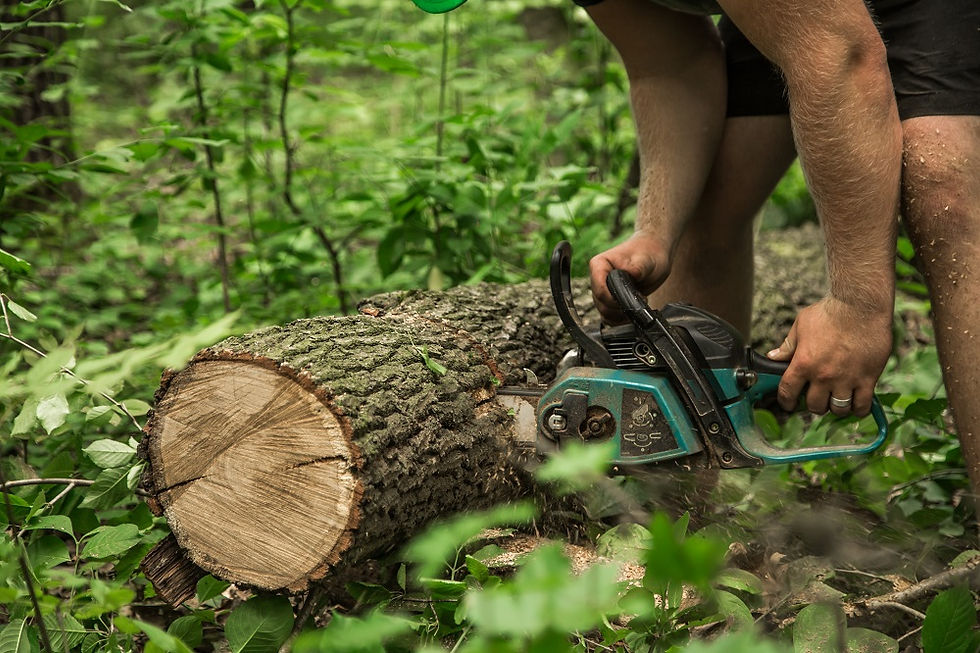Your Complete Guide To Tree Removal: Safety, Efficiency, And Sustainable Ethics
- Ashley Kinsela
- Feb 17
- 3 min read

Connecting with your natural surroundings often involves working in harmony with the trees that share our space. But what happens when you have trees that need removing on your property? Are you up to speed on the current best practices for executing this task safely and efficiently? Are there legal and ethical implications you need to consider? In this post, I'm going to address these questions and more in a comprehensive guide to safe and efficient tree removal.
Trees are incredible living landmarks that make our surroundings healthier and more beautiful. However, there inevitably comes a time when removing a tree becomes a necessity— whether due to disease, decay, or damage. Removing a tree properly is essential, not just for the safety of your property, but also for the individual doing the work.
We'll delve into the why, when, how, and who of tree removal, discussing everything from the legality of the process to the environmental considerations you should bear in mind. Furthermore, I'll share some thoughts on the pros and cons of professional versus DIY tree removal, as well as some tips for preventing tree-related problems in the first place.
Understanding The Why Of Tree Removal
Understanding the reasons why a tree might need to be removed is the first step towards safe and efficient tree removal. Sometimes it's not just about aesthetics or convenience— a rotting or diseased tree can pose a serious risk.
Recognizing The Right Time For Tree Removal
Recognizing the right time for tree removal involves identifying signs that a tree is unsafe or unhealthy. Key indicators include severe leaning, large cracks or dead branches, rotting, or a tree that has stopped producing leaves. Trees that pose a risk to nearby structures, power lines, or sidewalks also need attention. Additionally, a tree's overall decline in health or significant pest infestations can signal it's time for removal. Consulting an arborist ensures proper assessment to avoid unnecessary removals while addressing safety concerns.
Unpacking The Tree Removal Process

The tree removal process involves several steps to safely and efficiently remove a tree from a property. First, a professional arborist assesses the tree's health, size, and location. They then determine the best method for removal, which may include cutting it down in sections or using specialized equipment. The tree is carefully felled, and the branches and trunk are removed in manageable pieces. Finally, the stump is either ground down or removed completely. Throughout the process, safety precautions are taken to protect people and property.
Deciding Between DIY And Hiring Professionals
Sometimes, the scale or complexity of the job requires professional expertise. Let's consider the pros and cons of going it alone versus bringing in the experts.
Legal And Ethical Aspects Of Tree Removal
There's more to tree removal than meets the eye. Touching on local laws and regulations, as well as environmental considerations, is paramount.
Prevention And Precaution: Keeping Trees Healthy From The Start
Finally, prevention is always better than cure. We'll explore steps you can take to ensure tree health and avoid unnecessary removal.
In our changing climate and increasingly urbanised world, managing our trees becomes more important than ever. Removal, when necessary, should be done with mindful, well-informed care. Not just for the health and beauty of our surroundings, but also for the balance and wellbeing of our shared ecosystem.
Whether you're a homeowner, landlord, or curious nature enthusiast, acknowledging the importance of safe and efficient tree removal can help us maintain the function and aesthetic of our properties while preserving the intrinsic beauty of the natural world. Done correctly, this task can be a rewarding bridge between humans and nature, connecting our everyday lives with the wider ecosystem in which we live.








Comments